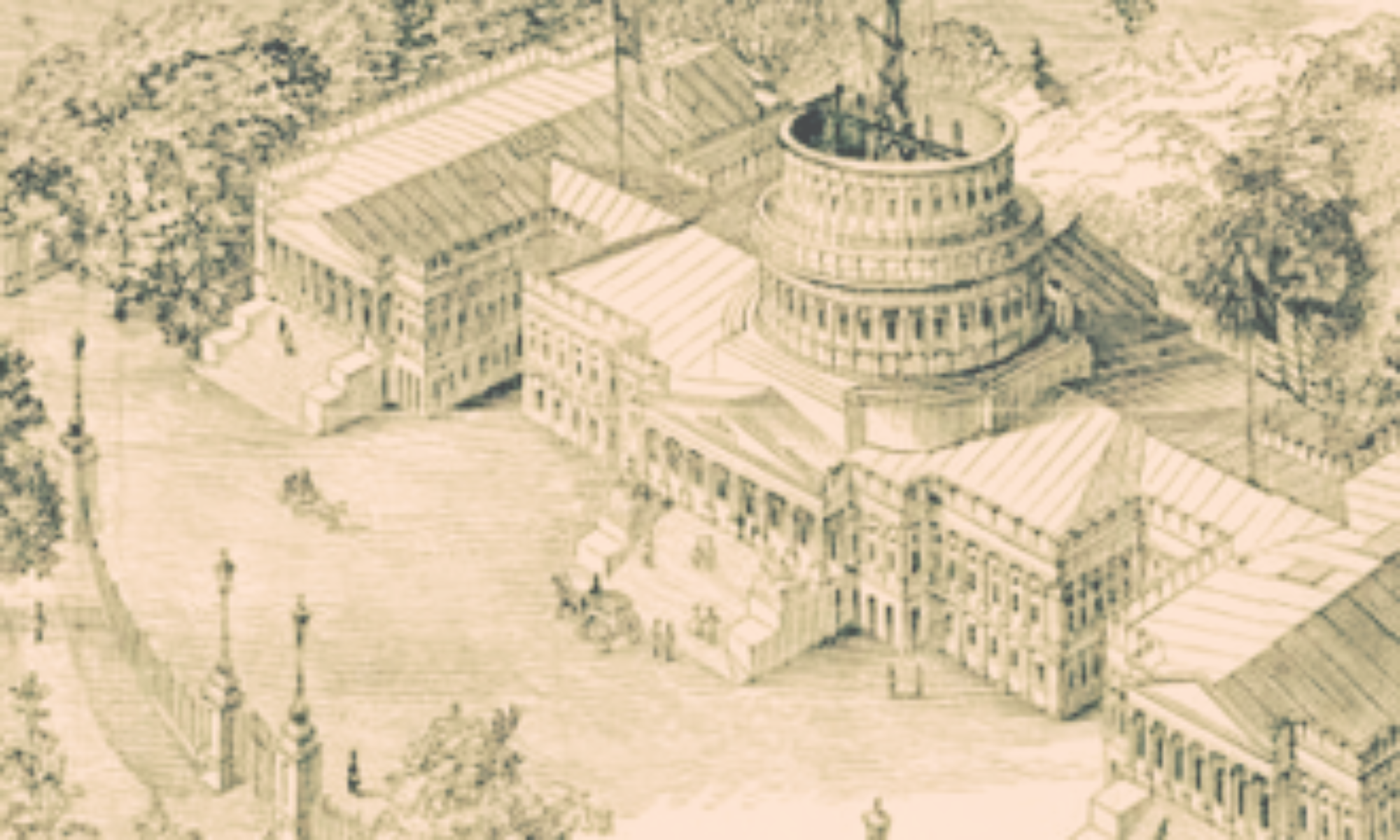
Concerns over Europe’s ever creeping sovereign debt crisis and the dramatic slowdown of the US economy in the first half of 2011 converged yesterday on Wall Street with the largest sell off in equities since December 2008.
Is this a hiccup? A market correction? Or the first signs of a double dip recession?
The longer term outlook is not immediately clear, as perception and not fundamentals are driving the market, with a pivotal US unemployment report due out today.
To that end, consider that companies in the S&P 500 broadly lost ground yesterday, despite the fact that reported corporate earnings thus far are 20% over last year. Fundamentals appear stronger than perception of overall fiscal health.
But while the outcome of the latest market volatility is uncertain, the public narrative is rapidly falling into place.
Specifically, that the President and Congress have few if any tools to deal with a new slowdown in the economy. That we are now at the mercy of forces beyond our control.
Nothing could be further from the truth.
It is true, as increasingly hysterical liberals point out, that government coffers are bare. After an orgy of spending from 2009-2010, the US is more deeply in debt without any corresponding increase in sustained economic growth. After the long-fought debt ceiling debate, there is simply no appetite for more aggressive government-centric spending.
But the lack of a checkbook does not stop Washington from taking actions that can profoundly impact the economy and growth, if only it has the courage to think big and set the table appropriately.
Corporate America is sitting on close to $2 trillion in cash and short term assets. To put that figure in context, cash-hording US companies have socked away the equivalent of the GDP of Great Britain
Corporate leaders have little confidence in the market given the massive interventions by the federal government since 2009 and the multiple uncertainties they generate. The key is to address those uncertainties so that we can unlock the investment, business expansion and job creating potential of those funds.
Some ideas:
Aggressive Regulatory Reform: according to the Small Business Administration (SBA), federal government regulations represent a $1.75 trillion tax on business. This is simply staggering, and worse, it disproportionately impacts small businesses which are the catalysts of sustained, private-sector led economic growth.
And despite the President’s promise to go line by line to eliminate unnecessary regulations, since assuming office in January 2009, the Obama administration has imposed 75 major regulations with a cost of nearly $40 billion. It is time to take a step back and score regulations specifically to their real-world impact on business.
Cut a Historic Budget Deal: Tax expenditures – specific tax breaks for corporations, individuals – distort the tax code and represent hidden federal spending. OMB/CBO estimates that these expenditures cost taxpayers nearly $1 trillion in a ten year budget window.
Trade off revenue created by closing tax loopholes on a 50-50% basis for deficit reduction and lower marginal income tax rates.
Forget about the Bush tax rates here. They are no longer relevant. Create a new top rate of 28%, with any overage in revenue going to deficit reduction. Lost deductions for health care and mortgage interest will be compensated for by overall lower tax rates.
Set a new corporate tax rate at 20% and a capital gains tax rate at 10%.
Set a trigger mechanism that will integrate the remaining 50% of revenue from closing loopholes into additional, lower tax rates, once the budget is brought into balance.
Make Social Security Solvent: Means-test Social Security for for higher income retirees. Raise the eligibility age for Social Security by one month for each year beginning in 2013. Change the government’s formula for calculating inflation to a more realistic, chained-based model, which will slow but not cut retiree benefits.
Uncap the payroll tax – current maximum of $106k paid by employers and employers – to cover all income. Exempt sole proprietor, small businesses from having to pay both employee and employer taxes. This will immediate stimulate business creation.
Cap employer contributions at 250k, with only individual income taxed beyond that amount.
With these new caveats in place, recalculate the pool of capital that will be generated by the new methodology. Using the overage from new revenue, set new contribution limits so the tax is less onerous and regressive for low income Americans, and with the decreasing scale for incomes over 250k to keep the incentive for wealth creation intact.
Reform Medicare: means-test the program for higher income Americans. Raise the eligibility age in conjunction with Social Security. Slow program inflation by introducing competition for medical services, similar to the structure for the Medicare Part D drug benefit.
Pursue Aggressive Free Trade Agenda: quickly approve the FTAs with Colombia, Panama and Korea. Actively seek additional bilateral trade agreements with our most promising trade partners, key among them, Vietnam. This will provide vital, tariff free markets for US products and services.
Create an Infrastructure Bank of the United States: model this after the highly successful Overseas Private Investment Corporation (OPIC), which creates public private partnerships by financing and insuring developmental projects in emerging markets. A domestic model of OPIC would allow the US to provide the full faith and credit of the US behind long term infrastructure projects, providing competitive financing and bringing private capital into vital public projects.
End the Housing Crisis: the ad hoc solutions of individual foreclosure relief or principal reduction have done little to stem a crisis of Great Depression proportions.
Eleven million Americans have mortgage loans that are greater than their property values. While the banks and lenders were bailed out in 2008, home owners never received relief for the dramatically changed circumstances from 2008.
Real estate valuations on mortgaged properties have to be reset. The delta will be set by the value of properties on September 15, 2008 – the day Lehman Brothers collapsed, and May 2010.
New mortgages will be issued based on the property value in May 2010, at current market interest rates. The reduction in principal and interest on those loans would represent the biggest tax cut for Americans in history, not only returning a floor of certainty to the housing market and reducing the number of Americans in foreclosure, but vitally putting cash in consumer pockets.
The unrealized gain from the old mortgages would be split three ways, between the borrower, the lender and the federal government.
The borrower would accept a capped, “appreciation premium” that would represent the borrowers continued interest in the property. As the housing market recovers, property sale resulting in a net profit would be shared on a 50-50 basis with the original mortgage lender up to a certain appreciation percentage.
Lenders would be required to take a substantial, if only one-time, haircut on their mortgage portfolios with a longer term ability to recoup some of the funds through property appreciation.
The feds would take the last tranche. Rolling this debt into a government bond backed by federal land as a tangible asset, the government would gradually pay off the principal with accruing interest over 30 years.
This seven point plan requires no direct federal outlays (though it does require USG guaranty authority in two instances for the bond and infrastructure bank). By addressing the deficit and lowering tax rates across the board, the government will restore market confidence in US finances and catalyze economic growth that will generate additional revenues for the Treasury. By reforming Social Security and Medicare now, future generations can be assured of their benefits, with the Treasury provided with adequate financing for the next cohort of retirees.
And through a reset in the housing market, the government can create a floor for the housing industry, return stability to most of America’s primary investment and source of capital, and release Americans from the prison of negative equity which promotes foreclosure by removing any tools for financial relief. The resulting cut in monthly payments will be the biggest tax cut in history, without a drain on the US treasury.
Lower corporate and individual tax rates, coupled with a reset mortgage market would provide enormous liquidity for capital invesment and expansion. Free trade deal will open up new markets while regulatory overhaul will make American business more competitive.
The result should be a wave of tax revenue that balances the federal budget before 2021, and creates surpluses after – all of which should go to retiring the debt.
It is all here – if only we have the will to make it so.
